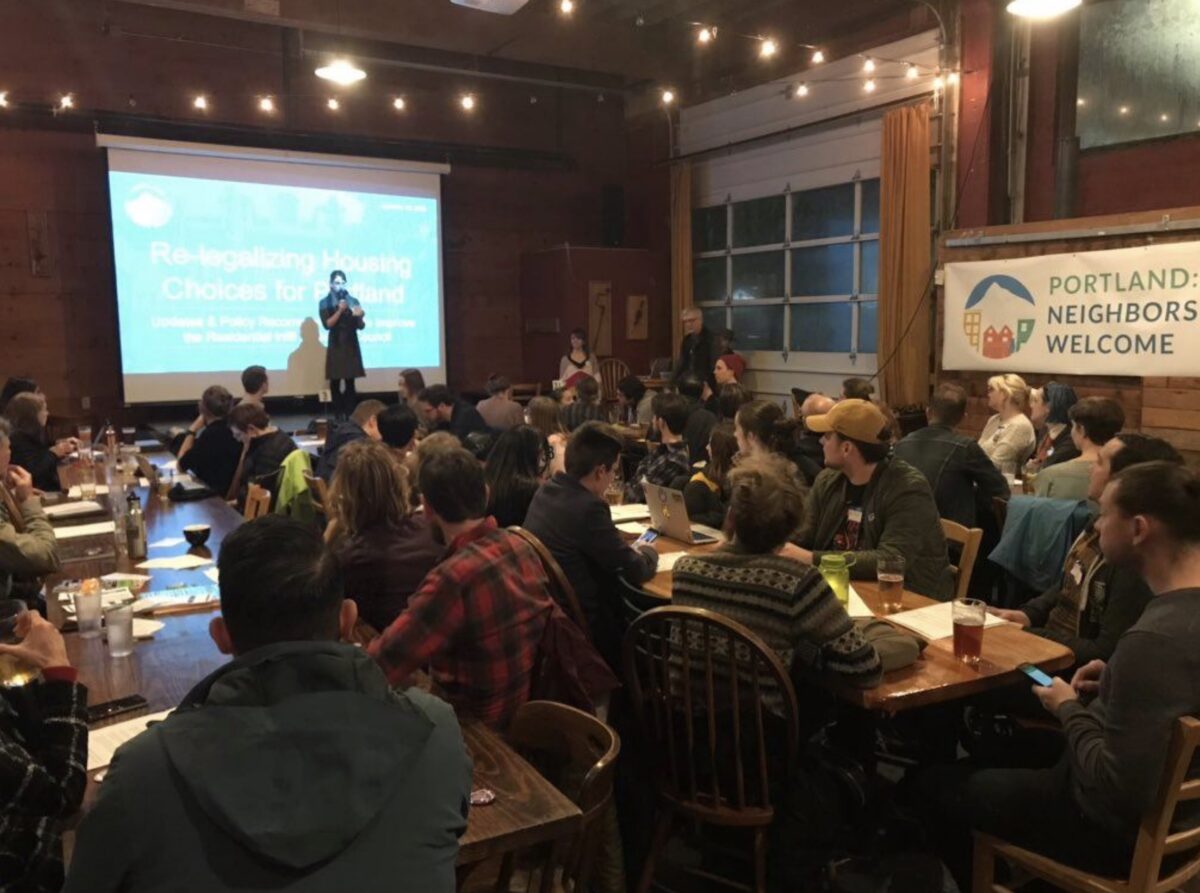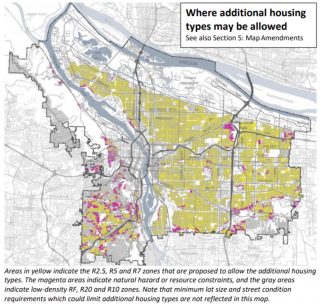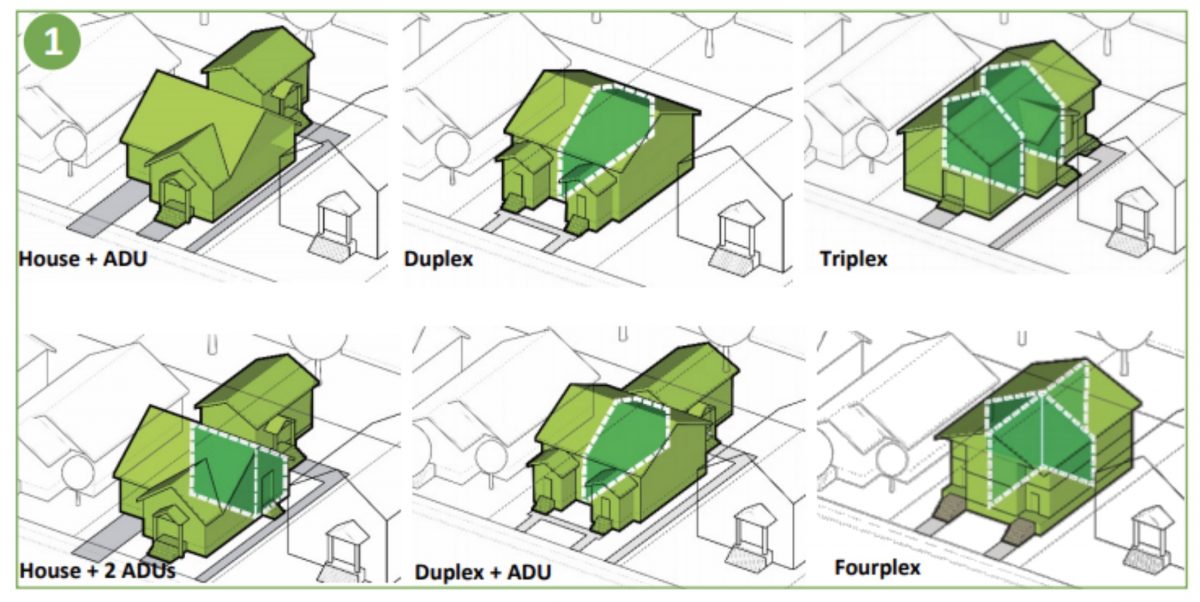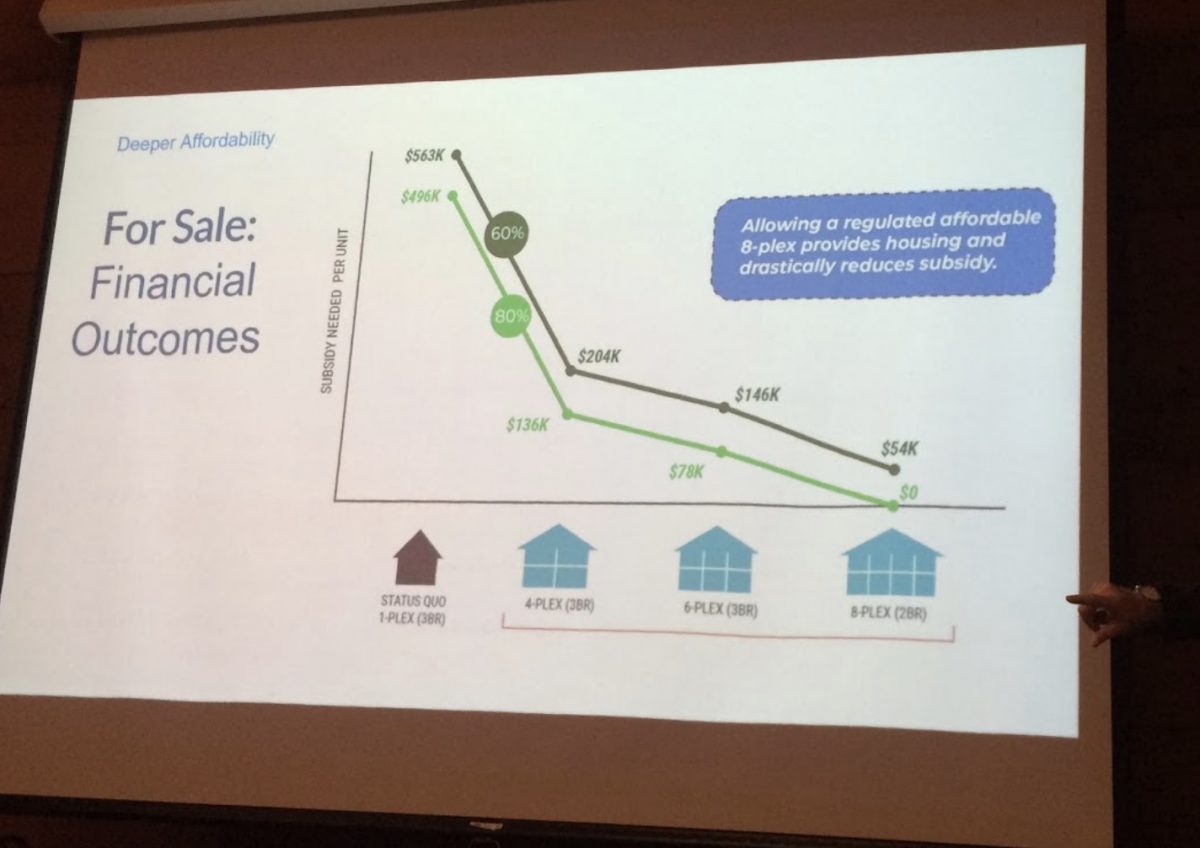
(Photo: Henry Kraemer)
When more people live closer to each other and to destinations, they will ride bikes more. That’s one reason housing and land-use is crucial if we want to reach our bicycling goals.

This week Portland City Council is hearing two days of public testimony for the long awaited Residential Infill Project (RIP). The hearings are scheduled for Wednesday January 15 at 2:00 pm and Thursday January 16 at 5:00 pm. On Friday night I attended an information session at Lucky Lab in northwest organized by Portland Neighbors Welcome (along with SunrisePDX, Business for a Better Portland, and No More Freeways).
Here’s what I learned…
The Residential Infill project will re-legalize duplexes, triplexes, and fourplexes in single family zones. 40% of Portland’s land area is currently zoned for single family housing and is expected to absorb twenty percent of Portland’s population growth. It wasn’t always this way. Portland’s first zoning plan was approved by voters in 1924, at a time when the Klan was running Oregon politics. Single family zoning was extended to more areas of the city in 1959. These decisions still impact housing prices today.

The latest version of the RIP draft (PDF) allows more flexibility for housing options up to fourplexes. Why four? Splitting land costs four ways has a significant affordability boost compared to three units. Homes with up to four units are considered residential and not commercial properties in banking and are available for a standard mortgage.
Advertisement
A key to the proposal is that maximum homes sizes are set to significantly decrease from what is allowed today, effectively ending demolitions of single family houses for much larger single family houses. On an R5 zoned lot the maximum house size will decrease from 6,750 square feet to 2,500 square feet for one unit. If more units are built, the maximum building size can increase to 4,000 feet.
Other notable items include:
- Eliminating parking minimums.
- “Visitable” ADA access for at least one unit on lots with 3-4 units. Visitable means no step entries, ground floor bathrooms, and wider doorways.
- Larger basement ADUs in existing houses.
Bureau of Planning and Sustainability Commission analysis showed that “there is a net reduction in displacement pressures across Portland as the result of the proposals.” Much like today though, displacement is not evenly spread out among neighborhoods. Julia Metz, an affordable housing developer with Catholic Charities, cautioned against using displacement models and maps too literally. “There has also been some chatter about removing some of the areas that are noted as being at-risk of displacement. If you remove those spaces you also remove the opportunities for affordable housing developers to get in there and build affordable housing.”
The Willamette Week recently reported that Commissioner Eudaly would like to see additional anti-displacement measures such as right of first refusal for tenants to purchase their property and city funding to help low income homeowners finance these projects.
Portland Neighbors Welcome is proposing a deep affordability option, where affordable housing developers could build up to eight units for housing affordable to families making 60% or 80% median family income. Neil Heller illustrated (below) how these units could stretch out public subsidy dollars further by helping more people or be able to provide even deeper subsidies.

Advertisement
When asked if supporting this option would delay the RIP even more, Heller responded that this potential amendment wouldn’t require any additional funding. Organizers pressed the need to get RIP passed as soon as possible, and that the Bureau of Planning and Sustainability could work on additional proposals to improve it after adoption.
Excited? Want to testify?
Portland Neighbors Welcome says it will be a packed hearing and people can sign up early on the 15th and expect the list to overflow to the next day. If this happens to you, make sure to check-in on the 16th. Supporters of RIP are planning on wearing blue to city hall. Testimony can also be submitted online to the Map App for both general and property specific comments.
For your testimony speakers recommended being specific and personal. What does affordable housing mean to you? Metz recommended that you use specific dollar values for incomes and rent or mortgage costs. Humanize who these policies will help. Low income residents include home healthcare workers, teachers, and seniors on social security. It’s likely that hundreds of people will be testifying over the two days, so make yours memorable by sharing personal stories of your housing experience in Portland, and what RIP would mean to you.
Thanks for stepping out of the bike box. Portland will never be a home for all bike riders if we don’t have homes for all Portlanders.
CORRECTION: This article originally had the days of this week’s hearings wrong. They are on Wednesday and Thursday. And the lead photo was taken by Henry Kraemer, not Doug Klotz as originally stated. We regret the errors.
— Catie Gould @citizen_cate on Twitter
— Get our headlines delivered to your inbox.
— Support this independent community media outlet with a one-time contribution or monthly subscription.

